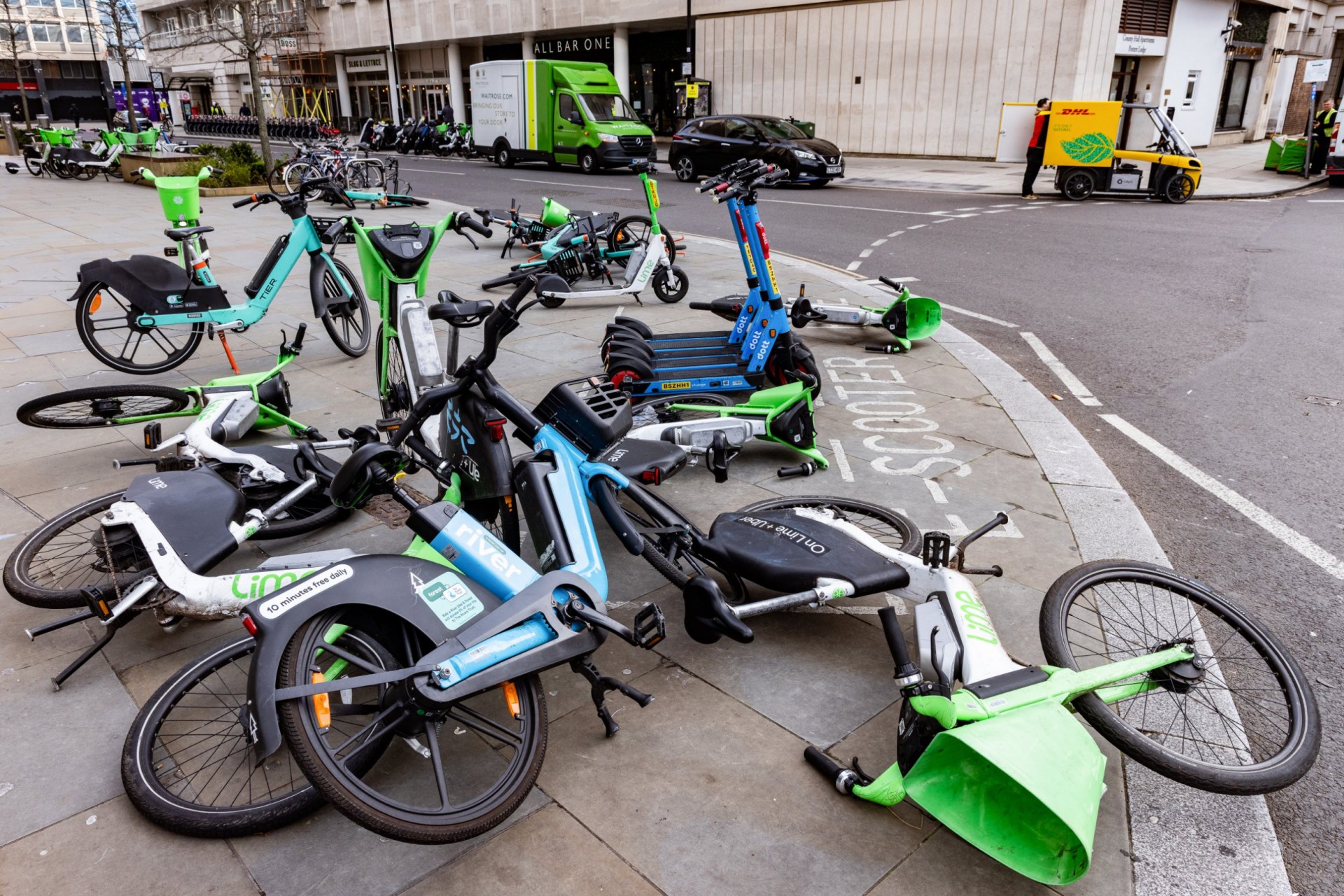The Rise of E-Bikes in Urban Life: A Double-Edged Sword
In recent years, e-bikes have swiftly integrated into the urban landscape, transforming the way residents navigate busy cities. With a plethora of rental options available, including Lime, Forest, Dott, Tier, and Bolt, these electric two-wheelers have become a common sight on city streets. While some celebrate their convenience and eco-friendliness, others voice concerns over their safety and the clutter they create in public spaces.
The Benefits of E-Bikes
Many individuals view e-bikes as a revolutionary means of transportation. They provide a green alternative to traditional petrol or diesel vehicles, promoting a healthier lifestyle and reducing reliance on cars. E-bikes can be especially advantageous in congested urban environments like London, where the emissions from a petrol vehicle significantly outweigh those from an electric bike. For instance, e-bikes emit around 22 grams of CO2 per kilometer, compared to 104 grams for cars, making them a more environmentally friendly option for commuting.
Supporters of e-bikes, like Simon Goff, highlight their potential to create “more bikes, fewer cars, happier and healthier Londoners.” This sentiment resonates with a growing segment of the population that prefers cycling over driving, especially given the rising costs and environmental impact associated with car usage.
The Drawbacks of E-Bikes
However, the influx of e-bikes has not come without its challenges. Critics argue that they clutter public spaces, obstructing pathways and causing hazards for pedestrians. Reports of e-bikes being abandoned in inappropriate locations are common, leading to frustrations among residents who feel their mobility is compromised. Nikki Dunn articulates this concern, stating, “You can’t even walk on the pavement… Feel sorry for blind people, disabled and people with prams.” Such sentiments underline the need for better management of e-bike parking and usage.
The Debate on Regulation
The burgeoning e-bike culture raises questions about regulation and safety. The current legal framework surrounding e-bikes can be confusing. While individuals over 14 can ride privately owned e-bikes, they must adhere to specific speed and design regulations. Rental services generally require riders to be at least 18 years old and possess identification, yet instances of younger riders are frequently observed.
The modification of e-bikes to exceed legal speed limits is another concerning trend. Reports of illegally enhanced bikes capable of reaching dangerous speeds have prompted calls for stricter enforcement. Some residents advocate for licensing requirements for e-bikes, suggesting that riders should carry insurance similar to that required for motor vehicle operators. However, this idea has met resistance, with some deeming it excessive for regular pedal cycles.
Managing the E-Bike Boom
The increasing popularity of e-bikes has sparked significant discussion about infrastructure and road safety. Ryan Robinson believes that until properly designed cycle lanes are established, riders will continue to navigate pavements and roads wherever they can. This situation creates friction between drivers, cyclists, and pedestrians, all vying for limited space on busy streets.
Proponents of e-bikes argue that they represent a positive shift towards sustainable transportation. However, the challenges they pose, particularly regarding safety and public space management, cannot be overlooked. Krzysztof Tokarski points out that many e-bike riders lack the experience of seasoned cyclists, which can lead to reckless behavior on the roads.
Conclusion: Finding a Balance
As cities adapt to the rapid rise of e-bikes, it is crucial to find a balance between embracing this innovative mode of transport and addressing the associated issues. Enhanced regulations, improved cycling infrastructure, and public awareness campaigns could contribute to a more harmonious coexistence of e-bikes, pedestrians, and drivers. The future of urban mobility may very well depend on our ability to navigate the complexities of this evolving transportation landscape.
With the right measures in place, e-bikes could indeed pave the way for a greener, healthier urban environment, transforming the way we think about travel in our cities.

